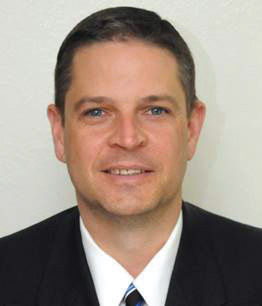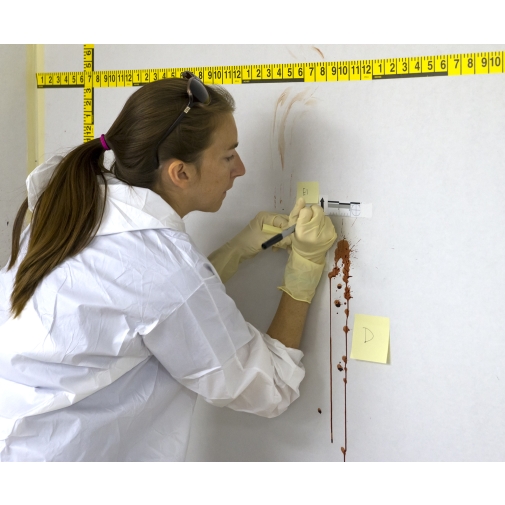- About Us
- Support
- Privacy Policy
- Contact us at +1 919-554-2244 or 1-800-356-7311
With the cooperation of Lebanon County Detective Bureau, Sirchie is offering its Bloodstain Pattern Training at the Lebanon County Department of Emergency Services, 1805 Cornwall Rd., Lebanon, PA 17042.
Start time for this class is 8:30 am.
This class is approved for 40 hours toward IAI Crime Scene & Bloodstain Pattern Analyst certification and recertification.
Throughout the United States and certainly in smaller departments, investigators face the complexities of violent crime scenes without the proper support or training. Like with all forensic disciplines, Bloodstain Pattern Analysis is only useful when the investigators recognize, understand, capture, and process the stains and stain patterns that they observe are observing at the crime scene.
This five-day, hands-on course is intended for those who are responsible for investigating and processing violent crime scenes involving bloodshed. The course intended to assist students in developing a fundamental knowledge of the discipline of bloodstain pattern analysis. In addition, this course will illustrate to students the basic principles of bloodstain pattern analysis and the practical application of Bloodstain Pattern Analysis in real casework. It must be understood that this course is not intended to make the student and instance expert in the discipline.
Course Objectives:
- Demonstrate knowledge of the development, history, and advancement of bloodstain pattern analysis
- Demonstrate knowledge of the inherent limitations of bloodstain pattern analysis.
- Recognize key bloodstain patterns and understand the mechanisms by which they are created.
- Determine impact angles for individual bloodstains.
- Demonstrate an ability to evaluate a bloodstain pattern scene.
- Determine a probable area of convergence for a group of bloodstains.
- Demonstrate the ability to combine area of convergence with impact angle to locate the probable area of origin for a given blood spatter event.
- Recognize proper protective measures to follow in a bloodstain scene.
- Demonstrate knowledge of the methods of documenting bloodstain scenes, both photographically and in written format.
Daily Schedule
Day 1
- Welcome, Introductions and Administrative Matters
- Photography Review
- Introduction to Bloodstain Pattern Analysis
- Important reminders when conducting a bloodstain analysis and limitations of analysis.
- History of Bloodstain Pattern Analysis
- The scientific method and developing objective case-oriented experiments.
- OSAC information
- Anatomical & Physical Properties of Blood
- Universal precautions
- Bloodstain Terminology & Discussion
- Case Studies
- Review of Day 1
Day 2
- Discussion of bloodstains and bloodstain patterns
- Bloodstain Taxonomy & Decision Charts
- Examination of Various Bloodstains and Bloodstain Pattern (poster board stains)
- Presumptive Blood Testing with hands on exercises (Kastle Myers, luminol, LCV, etc.)
- Practical Exercise 1 – Volume of Blood in Relation to Stain Size, Stain/Pattern Documentation and Exercise Discussion
- Practical Exercise 2 – Stain Size vs. Distance Fallen, Stain/Pattern Documentation and Exercise Discussion
- Practical Exercise 3 – Stain Shape vs. Angle of Impact, Stain/Pattern Documentation and Exercise Discussion
- Impact Spatter & Forward vs. Back Spatter
- Case Study & Discussion
- Expirated Blood
- Day 2 Review
Day 3
- Angle of Impact Determination
- Calculating Angle of Impact & Tabletop Exercise in Measuring & Calculating Stains
- Practical Exercise 4 – Impact Spatter Resulting from Blunt Force Trauma, Stain/Pattern Documentation and Exercise Discussion
- Area of Convergence & Tabletop Exercise in Determining Area of Convergence
- Area of Origin Determination
- Pattern Recognition With Practical Exercises
- Practical Exercise 5 – Projected and Splashed Blood
- Creating Blood Flow Pattern
- Blood Pool
- Drip Pattern (Blood into Blood on Horizontal and Vertical Surfaces)
- Blood Trail from Horizontal Motion
- Case Presentation
- Review Day 3
Day 4
- Cast of Stains/Pattern
- Practical Exercise 6 – Cast of Creation, Stain/Pattern Documentation and Exercise Discussion
- Transfer & Contact Stains
- Practical Exercise 7 – Transfers, Wipes and Swipes, Stain/Pattern Documentation and Exercise Discussion
- Practical Exercise 8 – Drying Time of Blood, Stain/Pattern Documentation and Exercise Discussion
- Importance of Bloodstain Pattern Analysis is an Investigation
- Case Studies
- Review of Stain Patterns
- Bloodstain Documentation (Photography, OSCR360, Worksheets)
Day 5
- Limitations & Challenges of Bloodstain Pattern Analysis
- Defending Your Methodology & Courtroom Testimony
- Creating Mock Crime Scenes
- Case Study Presentations
- Written Final Examination
- Practical Final Examination – Working Crime Scenes Created Earlier
- Graduation & Dismissal


Instructor Bio: Doug began his law enforcement career with the Gibson County Sheriff’s Department in Southwestern Indiana. While working at the Sheriff’s Office, Doug attended Vincennes University where he majored in Law Enforcement/Criminalistics, graduating Cum Laude. Doug began training as a crime scene technician for the Gibson County Sheriff’s Department and held that position from 1993 – 1998. In December of 1998, Doug moved to Texas and worked as a Crime Scene Specialist with the Austin Texas Police Department. While in Texas, Doug became certified as a Crime Scene Investigator through the International Association for Identification. Doug is also a certified by the American Board of Forensic Entomology as a Forensic Entomology Technician.
From November of 2002 to May 2007, Doug took the position of Chief of Police with the Oakland City Police Department in Indiana. He then moved to Thornton, Colorado where he worked as a Crime Scene Investigator with the Thornton Police Department Crime Lab. In August 2009, Doug was promoted to Sr. Criminalist and continues to serve in this capacity. Doug has lectured both domestically and internationally on various forensic topics to include Crime Scene Investigation, Forensic Entomology, Bloodstain Pattern Analysis, Shooting Incident Reconstruction and Crime Scene Reconstruction, and continues to do so. Doug has been qualified as an expert witness in both Federal and State Courts.
Doug is a past President of both the Indiana and Rocky Mountain Division of the International Association for Identification and is still an active member of both the parent body IAI and the Rocky Mountain Division. Doug served as the Regional Representative for the RMDIAI until 2019. Doug is a member of the Association for Crime Scene Reconstruction (ACSR) and has held the positions of board member, President- Elect, President and currently is serving Chairman of the Board of Directors for this organization. Doug is the Vice-Chair of the Crime Scene Consensus Body for the American Academy of Forensic Science Standards Board. Doug is also a member of Laura Pettler & Associates roundtable of world-renowned forensic experts that boasts a 98% solve rate using Pettler’s Murder Room death investigation method. Doug is the founder of the Colorado Forensic Investigators Group (COFIG) and the owner of Triad Forensics LLC, a forensic training and consulting company located in Colorado
For more information contact:
Wade Achey Training & Logistics Officer
Main: 717-272-7621
Desk: 717-675-1398
Email: wachey@lcdes.org
Area Hotels:
Fairfield Inn & Suites Lebanon Near Expo Center
100 Springwood Drive
Lebanon, Pennsylvania, USA, 17042
Tel: +1 717-273-3969

